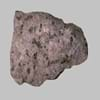Definition
Kenyte is a variety of porphyritic phonolite or trachyte rock with rhomb shaped phenocrysts of anorthoclase with variable olivine and augite in a glassy matrix
Lamprophyre is uncommon igneous rocks primarily occurring as dikes, lopoliths, laccoliths, stocks and small intrusions
Origin
Mount Kenya
Unknown
Discoverer
J. W. Gregory
Unknown
Etymology
From the mountain ranges- Mount Kenya and is named by J. W. Gregory in 1900
From Greek lampros bright and shining + porphureos purple
Class
Igneous Rocks
Igneous Rocks
Sub-Class
Durable Rock, Medium Hardness Rock
Durable Rock, Medium Hardness Rock
Group
Not Applicable
Plutonic
Other Categories
Fine Grained Rock, Opaque Rock
Coarse Grained Rock, Fine Grained Rock, Opaque Rock
Texture
Glassy, Granular
Porphyritic
Color
Brown, Buff, Cream, Green, Grey, Pink, White
Black, Bluish - Grey, Brown, Dark Greenish - Grey, Green, Grey
Durability
Durable
Durable
Scratch Resistant
Yes
Yes
Appearance
Banded and Foilated
Dull, Banded and Foilated
Interior Uses
Decorative Aggregates, Entryways, Homes, Interior Decoration, Kitchens
Decorative Aggregates, Interior Decoration
Exterior Uses
As Building Stone, Garden Decoration, Paving Stone
As Building Stone, Office Buildings
Other Architectural Uses
Curbing
Curbing
Construction Industry
As Dimension Stone, Cement Manufacture, Construction Aggregate, for Road Aggregate, Landscaping, Making natural cement, Manufacture of Magnesium and Dolomite Refractories, Production of Glass and Ceramics
As Dimension Stone, Cement Manufacture, for Road Aggregate, Making natural cement, Manufacture of Magnesium and Dolomite Refractories
Medical Industry
Not Yet Used
Taken as a Supplement for Calcium or Magnesium
Antiquity Uses
Artifacts, Monuments, Sculpture
Artifacts, Monuments, Sculpture
Commercial Uses
Cemetery Markers, Creating Artwork
An Oil and Gas Reservoir, As a Feed Additive for Livestock, Gemstone, Metallurgical Flux, Production of Lime, Soil Conditioner, Source of Magnesia (MgO)
Types
Not Available
Minette, Alnoite, Camptonite, Monchiquite, Fourchite, Vogesite, Appinite and Spessartite
Features
Application of acids on the surface causes cloudy frosting, Available in Lots of Colors and Patterns, Dissolves in hydrochloric acid, Is one of the oldest rock
Always found as volcanic pipes over deep continental crust, Host rock for Diamond, Is one of the oldest rock, Surfaces are often shiny
Archaeological Significance
Famous Monuments
Data Not Available
Data Not Available
Famous Sculptures
Data Not Available
Data Not Available
Formation
Kenyte is a fine-grained, hard rock which is a type of metasomatite, essentially altered basalt. It forms with or without crystallization, either below the surface as intrusive rocks or on the surface as extrusive rocks.
Lamprophyre formation takes place deep beneath the Earth’s surface at around 150 to 450 kilometres, and are erupted rapidly and violently.
Mineral Content
Albite, Amphibole, Biotite, Cancrinite, Feldspar, Hornblende, Plagioclase, Pyroxene, Sodalite
Amphibole, Carbonate, Garnet, Micas, Olivine, Phlogopite, Pyroxene
Compound Content
Aluminium Oxide, CaO, Iron(III) Oxide, FeO, Potassium Oxide, MgO, MnO, Sodium Oxide, Phosphorus Pentoxide, Silicon Dioxide, Titanium Dioxide
Aluminium Oxide, NaCl, CaO, Iron(III) Oxide, FeO, Potassium Oxide, MgO, MnO, Sodium Oxide, Silicon Dioxide, Titanium Dioxide
Types of Metamorphism
Burial Metamorphism, Cataclastic Metamorphism, Impact Metamorphism
Cataclastic Metamorphism, Impact Metamorphism
Types of Weathering
Biological Weathering
Biological Weathering
Types of Erosion
Chemical Erosion, Coastal Erosion
Chemical Erosion, Water Erosion, Wind Erosion
Grain Size
Fine Grained
Fine to Coarse Grained
Fracture
Conchoidal to Uneven
Conchoidal
Streak
White, Greenish White or Grey
White
Porosity
Highly Porous
Very Less Porous
Luster
Greasy to Dull
Subvitreous to Dull
Compressive Strength
Not Available
Toughness
Not Available
Not Available
Specific Gravity
2.6
2.86-2.87
Transparency
Translucent to Opaque
Translucent to Opaque
Density
2.6 g/cm3
2.95-2.96 g/cm3
Resistance
Heat Resistant, Impact Resistant, Wear Resistant
Heat Resistant, Impact Resistant
Deposits in Eastern Continents
Asia
Indonesia, Iran, Russia, Saudi Arabia, Sri Lanka, Taiwan, Thailand, Turkey, Turkmenistan, Vietnam
Russia
Africa
Angola, Egypt, Madagascar, Namibia, Nigeria, South Africa
Angola, Botswana, Cameroon, Ethiopia, South Africa
Europe
Andorra, Finland, France, Germany, Great Britain, Italy, Norway, Portugal, Spain, Sweden
England, Hungary, Iceland, United Kingdom
Others
Greenland
Antarctica, Greenland
Deposits in Western Continents
North America
Canada, USA
Canada, Mexico, USA
South America
Brazil, Chile, Colombia, Uruguay, Venezuela
Argentina, Colombia, Ecuador
Deposits in Oceania Continent
Australia
New Zealand, Queensland, South Australia, Tasmania, Western Australia
New South Wales, New Zealand, Queensland, South Australia, Western Australia










